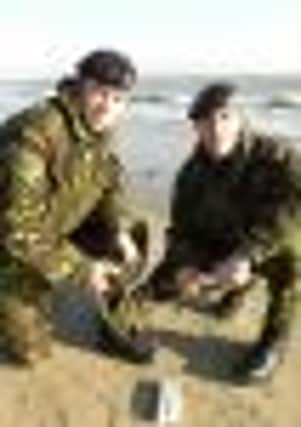‘Just another day in the office’ for bomb team in Littlehampton


A slight chill nipped the air, dog walkers were taking their beloved pets for a stroll in the sunshine along the Promenade, while metal detector enthusiasts combed the beach.
However, the peace and tranquillity was soon shattered after a rusty, Second World War explosive was discovered by a passer-by on the shore behind the Harbour Park amusement site.
Advertisement
Hide AdAdvertisement
Hide AdA specialist Royal Navy bomb disposal team was dispatched to deal with the device, which was lodged in the exposed sands during the low tide last Wednesday (February 1).
The explosives experts arrived shortly before 2pm and began their work to cordon off the section of beach.
Lieutenant Dan Herridge, the officer in charge of the team, said he believed the device had originally been a primer used in an anti-submarine mine, deployed at some point during the war.
After safely detonating the explosive out at sea, the unit, from the naval base in Portsmouth, moved back to its specially equipped van, to pack up for the day.
For the team, it was just another day in the office.
Advertisement
Hide AdAdvertisement
Hide AdLt Herridge said: “We’re called almost once a day to deal with some sort of explosive device, in one form or another, across the south of England.
“We’re the local crew, I guess you might say. So for us, it’s very much another day in the office.”
The squad had recently been called out to deal with a similar device discovered in the River Arun, at Arundel, by a team of police divers during a routine training exercise at the end of November.
“Many people assume we’re Army EOD [explosive ordnance disposal] officers, which can get frustrating at times,” admitted Lt Herridge.
Advertisement
Hide AdAdvertisement
Hide Ad“We’re often called upon to deal with devices in low waters, or by the coastline.”
Lt Herridge explained that during the controlled destruction of the ordnance, two sticks of plastic explosive was used to obliterate any explosive components inside.
He said: “It’s always so much safer for us to simply destroy any suspect item, as opposed to trying to take it apart.
“There’s no point in risking the lives of the men, particularly with Second World War devices which, over time, can become unstable.”
The beach was reopened to the public shortly after the weapon had been destroyed.